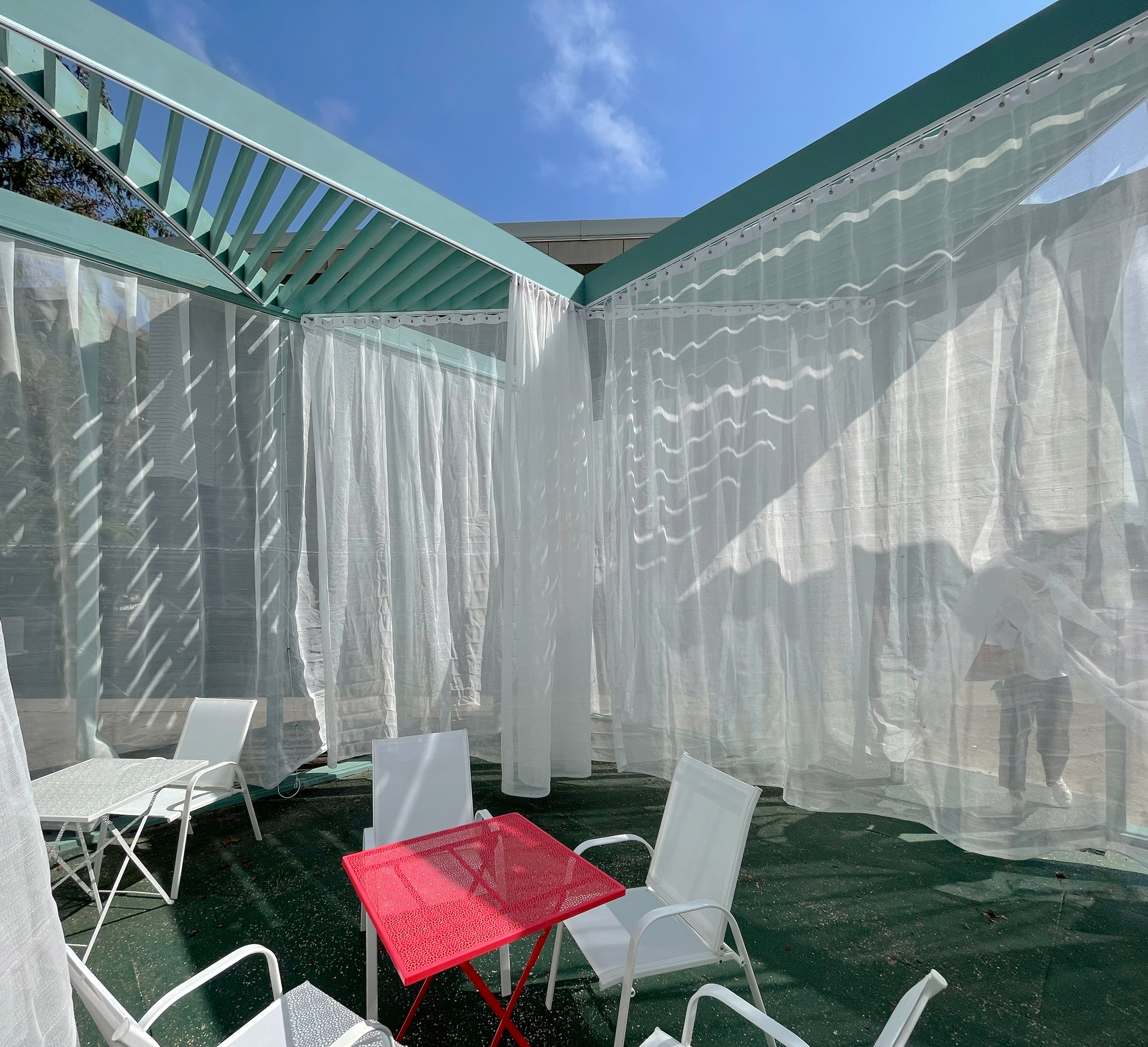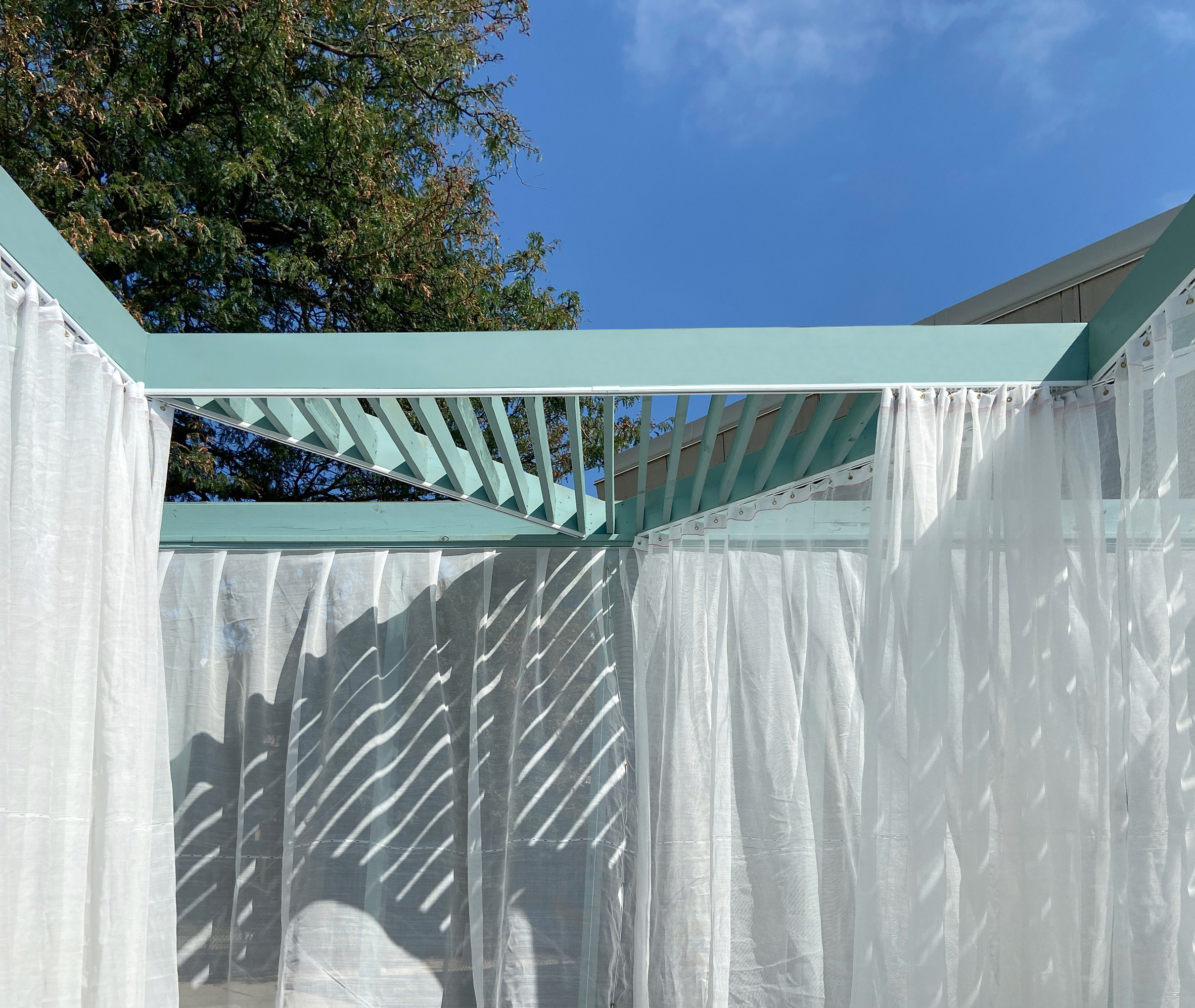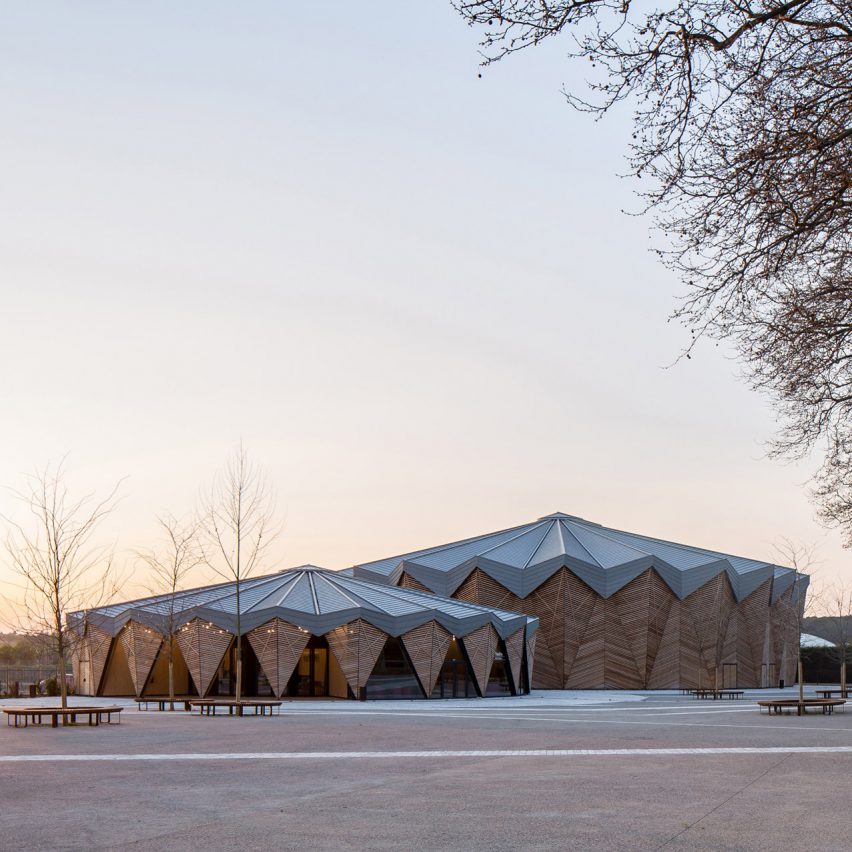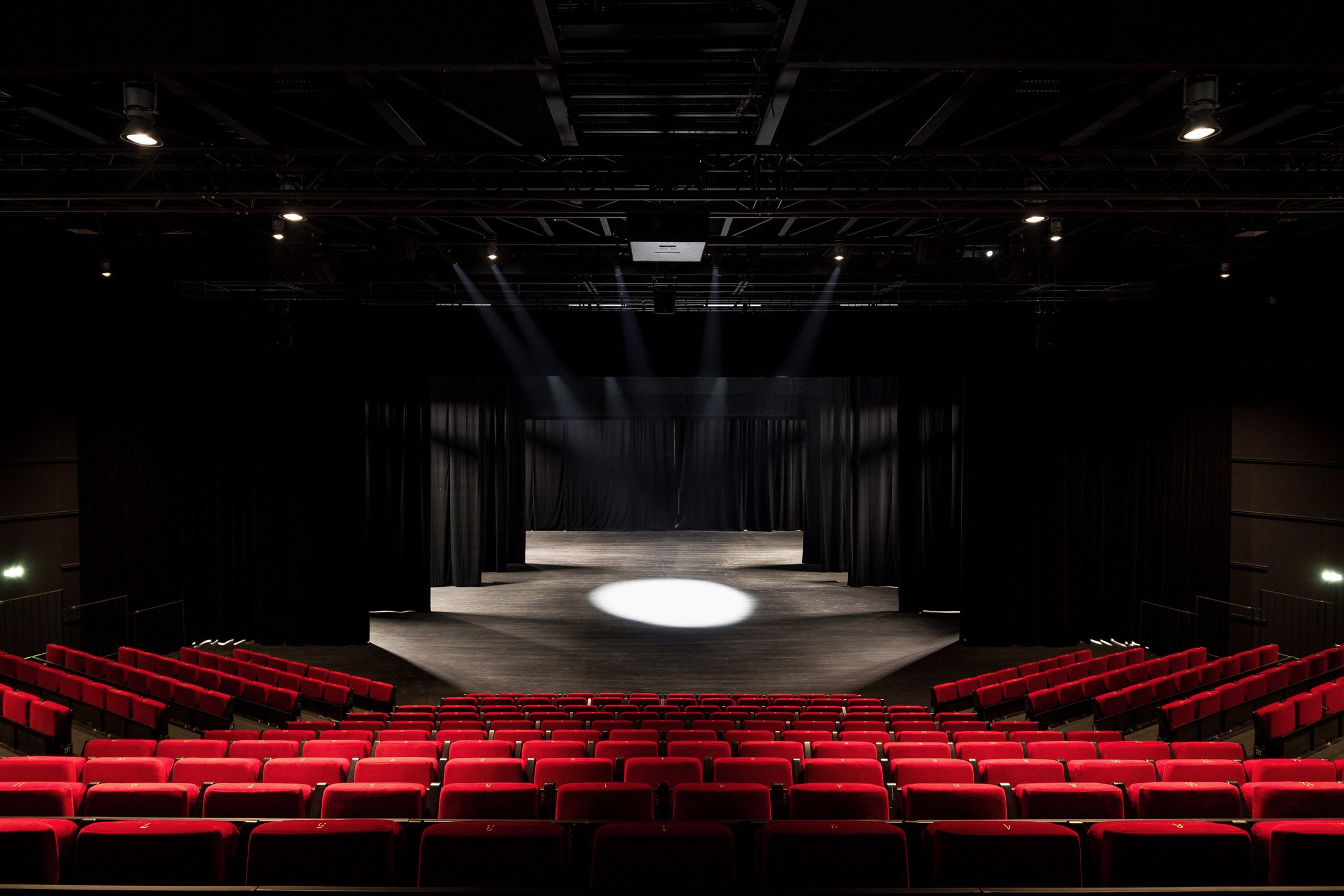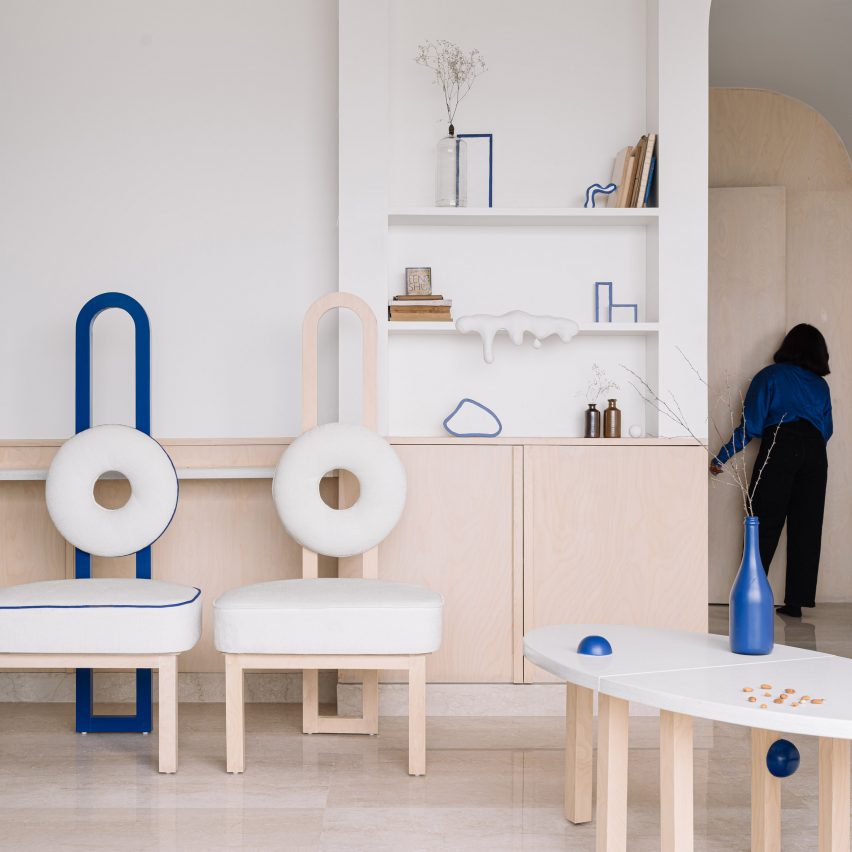
The Act of Quad has introduced a smattering of blue furnishings and fittings to this high-rise apartment, renovated by the design studio in the Indian city of Thane.
The cobalt touches create a vibrant contrast inside the otherwise neutral-toned 101-square-metre home, which is shared by a middle-aged couple, their two daughters and a pet cat.

Mumbai-based The Act of Quad made a handful of structural changes to the apartment during the renovation, knocking down a wall in the entranceway to make the dining area appear larger and extending the third bedroom with the help of a convex partition.
Several sharp corners near the ceiling were rounded off, which the studio said helps to "soften the severity" of the existing architecture.

The Act of Quad created a number of bespoke furnishings for the space, including a three-legged quartz-topped dining table, a grey L-shaped sofa and a swing that is suspended in front of the apartment's expansive windows, allowing inhabitants to sit and sway while taking in the city views.
The interior is dotted with cobalt-blue accents, ranging from a tubular pendant light in the living room to the laminate that lines the arched drinks cupboard in the corner.
Nearby, one of the chairs features blue piping around its seat cushion and a matching arched backrest.

"When we first suggested cobalt to our clients, they thought it was not a colour for a home," explained Priyanka Itadkar and Falguni Bhatia who lead The Act of Quad. "To them, it seemed very out of the blue."
"Now, our clients say that they can't imagine any other colour in their home," the duo added.

Blue appears again in the younger daughter's bedroom, where cobalt-coloured paint covers a slim wall-mounted rail.
Two back cushions are suspended from the horizontal bar, allowing the adjacent bed to double up as a sofa during the daytime.
A cosy blue cubby for the cat was integrated into the room's wardrobe and a geometric chair made from waste materials found on-site sits tucked under the desk.
The other bedroom, which belongs to the older sister, is largely dominated by crisp white surfaces.

But a niche accommodating a small work table is rendered in peachy pink, together with the orbs fixed to the outside of the wardrobe for holding coats or bags.
The studio established a slightly warmer feel in the parents' bedroom, which was designed to evoke the wood-lined hotel suites the couple used to frequent during their holidays in northern India.

Birch plywood was used to craft the room's floor-to-ceiling storage units as well as the bed frame and headboard, while surfaces in the en-suite are clad in a veiny brown stone.
The primary family bathroom is covered with cobalt-blue tiles and has a large organically shaped mirror mounted above the sink.

The Act of Quad completed another residential project in India just last year, in which the studio merged two Mumbai flats to form a "minimal but playful" home for three generations.
The photography is by The Fishy Project.
The post Cobalt-blue accents brighten interior of family apartment in Thane appeared first on Dezeen.
from Dezeen https://ift.tt/3eYBHzv







